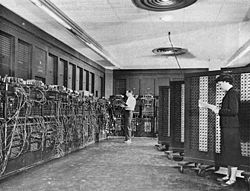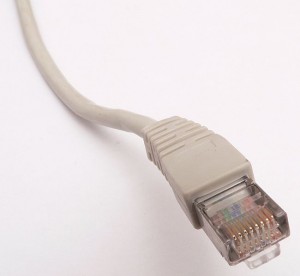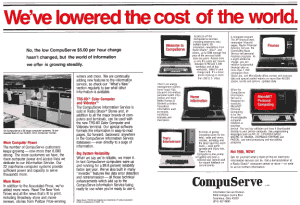Computers
ENIAC Retired
Considered the world’s first fully electronic computer, after eleven years of continuous service the ENIAC computer was retired from service.
Ethernet is Drafted
Digital, Intel, and Xerox release version 1.0 of the Ethernet specification, known as the Blue Book. Since that time, Ethernet has evolved into the de facto networking standard for local area networks (LAN) in businesses and in the home.
Richard Stallman Announces the GNU Project
Promising a “Free Unix”, Richard Stallman announces that he is going to write a complete Unix-compatible software system he calls GNU (which stands for Gnu’s Not Unix). This is a significant milestone in the history of open source and free software. Stallman would later found the Free Software Foundation.
The First Personal Computer You Never Heard Of
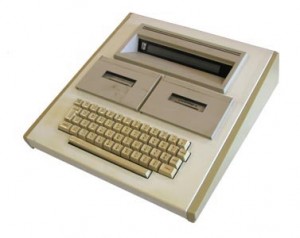
Micro Computer Machines of Canada introduces their MCM/70 microcomputer at a programmer’s user conference in Toronto. Possibly the earliest commercially manufactured device that can now be considered a personal computer, the MCM/70 gained customers at companies such as Chevron, Mutual Life Insurance, NASA, and the US Army. The company worked closely with Intel on the design of their computer and made very early use of the Intel 8008 processor, of which the basic design was used for the future Intel 8086. However, failing to generate venture capital in the Canadian marketplace, the MCM/70 never gained significant market acceptance and by the time the Apple II and other early personal computers were being released, the MCM/70 was relegated to a footnote in history.
CompuServe Launches MicroNET
CompuServe launches the first consumer-oriented online information service, which they called MicroNET. This marked the first time a consumer had access to services such as e-mail. The service was not favored internally within the business-oriented CompuServe, but as the service became a hit, they renamed the service CompuServe Information Service, or CIS. By the mid-1980’s CompuServe was the largest consumer information service in the world and half their revenue came from CIS. In 1989 CompuServe connected its proprietary e-mail system to the Internet e-mail system, making it one of the first commercial Internet services. However, CompuServe did not compete well with America On-Line or independent Internet Service Providers in the 1990’s and lost its dominant market position.
Computer Code Protected by Copyright

The US District Court for the Northern District of California rules that computer code is protected under copyright law. The ruling stems from the case NEC Corp. v. Intel Corp, which was basically a battle over who had the right to produce x86 processors. The ruling, while finding that Intel had copyright protection for the code in their processors, also found that reverse-engineering code was also legal and therefore NEC did not violate Intel’s copyright in producing their own x86 processors. This ruling that code could be copyrighted changed the landscape, for better or worse, of software and computer development.
First FORTRAN Program Runs

The first FORTRAN program is executed. FORTRAN was developed by IBM scientists who were looking for a better way to program the IBM 704 mainframe computer. It quickly became the dominant programming language for scientific and engineering applications and still is used today, especially in the area of high-performance computing.
NeXTSTEP OS Released
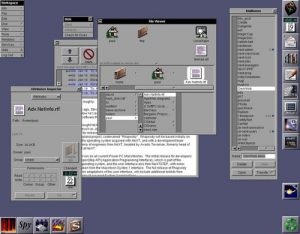
NeXT Computer releases version 1.0 of NeXTSTEP, an object-oriented, multitasking operating system. Originally designed to run on NeXT’s brand of computers, it was later ported to other architectures such as the Intel x86.
Often considered years ahead of its time, NeXTSTEP brought to market many advanced features that were not seen together in any other operating system for nearly 10 years. Its powerful object-oriented development environment was also used for the creation of the word wide web.
In 1997 Apple acquired NeXT Computer to build their next-generation operating system upon the NeXTSTEP architecture, later named Mac OS X. Today’s iOS that runs on iPhone and iPads is descended from Mac OS X and NeXTSTEP.
I had the opportunity to use NeXTSTEP in 1992 for a computer science class at the University of Illinois. I immediately recognized how powerful it was, yet didn’t fully appreciate what I was experiencing until years later. It really wasn’t until the late 1990’s and early 2000’s that other operating systems brought together the power and reliability of NeXTSTEP.
The Last Apple II
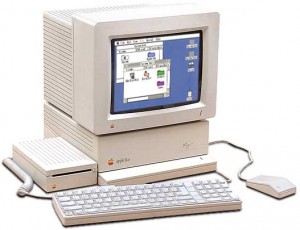
Apple introduces the Apple IIgs, the last major product release in the Apple II series of personal computers. Blending the older Apple II series computers with aspects from the Macintosh computer, the advanced “graphics and sound” capabilities of the IIgs (hence the name) was ahead of other contemporary computers such as the Macintosh and IBM PC. However, as Apple chose to focus on the Macintosh line of computers, Apple eventually ceased development of the Apple II series. The last IIgs was produced in December of 1992.
First Commercial Hard Drive

The IBM 350 Disk Storage Unit Model 1 was announced, which was the first commercial storage unit to use magnetic disk storage, the technology behind hard disk drives. About the size of two refrigerators and weighing in at one ton, the 350 could store about 4 – 5 megabytes, depending on how it was calculated.
The 350 would be an integral part of the IBM RAMAC 305 computer, which would be introduced 9 days later on September 13th. The RAMAC 305 and 350 Disk Storage Unit were designed to replace the punch card “tub file” system that was the primary means of storing repeatedly accessed data.

